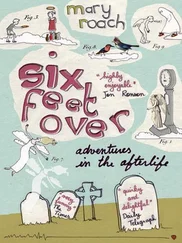The decision to put a chimpanzee in space before an astronaut was not, in either instance, an easy one. NASA had to weigh concern for the Mercury crew and lack of confidence in the hardware against the enormous pressure to best the Soviet Union. The early days of the Apollo program would be plagued with the same mixture of urgency and caution. Having watched the USSR rack up space firsts—first man-made satellite, first orbit of a live animal (Laika), first recovery of live animals (Belka and Strelka) from orbit, first man in space and in orbit, first spacewalk—the United States was ever more determined to reach the moon first. NASA was working furiously on President Kennedy’s publicly announced time line: By the end of the 1960s, America would put a man on the moon. Or anyway, something pretty close.
First U.S. Flag on Moon May Be Planted by Chimp
BETWEEN MAY 1962 and November 1963, veteran Associated Press reporter Harold R. Williams filed four stories based on visits to a new chimp facility at Holloman Aeromedical Research Laboratory. “Chimp College,” as he called it, was a million-dollar expansion of the grotty-looking facilities where Ham, Enos, and other chimps had lived and trained for the Mercury missions. It featured a staff of twenty-six, brand-new “dorms” with an outside run attached to each cage, a surgical suite, a kitchen, and a curriculum of “new, complicated and secret” tasks. Williams’s series ran in dozens of U.S. newspapers under various headlines like the one above, almost all of them highlighting the possibility of a lunar mission: “First from U.S. to Moon? Chimponauts [49] Holloman moved away from this term after receiving letters from irritated etymologists. The suffix “naut” comes from the Greek and Latin words for ships and sailing. Astronaut suggests “a sailor in space.” Chimponaut suggests “a chimpanzee in sailor pants.”
Hard at Work on Secret Space Program.” “Holloman Monk May Be First on Moon.” “Space Chimps’ College Grad May Hit Moon.”
Williams described college “Ph.D.” Bobby Joe as he sat at an instrument panel mock-up, effortlessly maneuvering a joystick to keep a crosshair centered inside a circle. “There is no question about it,” said Williams’s guide, a Major Herbert Reynolds, who would go on to become president of Baylor College of Medicine. “He could guide a space vehicle into space and bring it back.” On a different visit, Williams peered through the window of a “simulated space vehicle” at a chimp named Glenda. Glenda had been inside for three days, sleeping and working on the same shifts an astronaut would have. She had two days left to go.
Five days is what it took the Apollo 11 astronauts to reach the moon and plant the American flag. Was it true? Had NASA and the Air Force been planning to beat the Soviets to the moon by sending a trained chimpanzee on a one-way mission? A round trip was certainly out of the question. Lifting off from the moon and docking with an orbiter was beyond the capabilities of an ape. But a straightforward moon shot and capsule touchdown could be managed from the ground, just as unmanned rovers are landed remotely today.
The trickiest part would be finessing the public relations debacle of a dead chimpanzee hero. Best not to take a cue from the Soviet playbook. In November 1957, a mellow and patient Moscow street dog [50] According to space historian Asif Siddiqi, the Soviets preferred to train dogs for space travel, because apes were too excitable, too prone to catching colds, and “more difficult to dress.” And because Soviet space program bigwig Sergei Korolev loved dogs. Both the United States and the Soviet Union built a Tomb of the Unknown Soldier, but only Russia has a Tomb of the Unknown Dog (outside St. Petersburg), honoring the contributions of canine research subjects.
named Laika, traveling suitless in a pressurized capsule, became the first living creature to orbit the home planet. Alas, there was no plan or means to bring her safely back down. For over a week, Soviet officials were mum on the topic, refusing to say whether Laika was still alive. They ignored inquiries from media and animal rights groups, until the clamor and outrage had all but eclipsed the glories of their achievement. Finally, nine days after the launch, Radio Moscow confirmed that Laika was dead. The particulars were left to speculation. In 1993, Laika’s trainer Oleg Gazenko told one of the authors of Animals in Space that she’d perished when a malfunction caused her capsule to overheat, just four hours into her flight.
Perhaps less scandalous to send a willing human. In 1962—the same year that Williams filed his Chimp College pieces—a story ran in a Sunday newspaper supplement called This Week suggesting that the USSR was considering sending a cosmonaut on a one-way lunar landing mission. That same year, according to space historian Dave Dooling, Missiles and Rockets, Aviation Week & Space Technology , and Aerospace Engineering all detailed a similar mission proposal making the rounds at NASA. The “one-way, one-man” lunar expedition was the brainchild of a pair of Bell Aerosystems engineers, John M. Cord and Leonard M. Seale. “It would be cheaper, faster, and perhaps the only way to beat the Russians,” Cord is quoted as saying. Dooling points out that intelligence data gathered at that time suggested that the Soviets would be capable of landing a craft on the moon as early as 1965. (The United States landed on the moon in 1969.)
Neither the Soviet nor the American version proposed leaving the sad spaceman to die on the moon. Someone would come pick him up in one to three years—just as soon as they figured out how to do it and built the hardware. A total of nine launches would follow his own, delivering a living module, communications module and equipment, construction equipment to build the modules, plus the 9,910 pounds of food, water, and oxygen he was projected to consume while waiting around for his ride.
And who would agree to go? “It is sincerely believed,” wrote Cord and Seale, “that capable and qualified people could be found to volunteer for the mission even if the return possibilities were nil.” I believe it. There are astronauts today who happily would sign on for a one-way mission to Mars. This scenario holds no eventual return trip. Rather, the crew would live out the rest of their lives with help from unmanned resupply landers. “I’ve spent my life training to go into space,” astronaut Bonnie Dunbar told New Yorker writer Jerome Groopman. “If my life ends on a Mars mission, that’s not a bad way to go.” Valentina Tereshkova, the first woman in space, said in a 2007 interview that reaching Mars was the dream of the early cosmonauts and that she would love, at seventy-two, to realize that dream: “I am ready to fly without coming back.” Though years or decades of resupply launches might not be cheaper or easier than figuring out the technology to make fuel for the ascent engines out of Martian resources. Or putting fuel and hardware for the return trip onto those unmanned landers, instead of survival supplies.
Dooling thinks it unlikely that anyone at NASA gave serious thought to Cord and Seale’s one-way moon mission. But it does lend credence to the possibility that the aerospace community had—however fleetingly—considered launching a one-way chimped mission.
I went back and reread Williams’s AP stories. Outside of the headlines, there were no specific references to a lunar mission. Were the newspaper [51] These were not great papers. Headlines proclaimed absurdities like “Black Label Was Elected a Fine Beer” and “Science Cures Piles!”—advertisements misleadingly typeset to look like news. Not to mention the very confusing “Thieves Get Ham.” In what I first took to be an astrochimp kidnapping plot, two men pried open the rear door of a supermarket and made off with a dozen three-pound canned Rath Blackhawk hams and a half-dozen canned Wilson (clearly the inferior ham) half-pounders.
editors taking liberties to make the story more provocative? I needed another source. Major Reynolds is dead. Jerry Fineg had left Holloman by 1962. Both he and Britz said they didn’t recall hearing anything about it, though Britz recalled seeing rhesus monkeys at Brooks Air Force Base, near San Antonio, being taught to operate a joystick. “They were trying to see if they could actually fly,” he told me in an email. “They were good!” Britz didn’t know what the ultimate goal of the project had been. I do know chimpanzees were being trained for space-related tasks at Brooks as late as 1964, because I found a paper that referred to a chimp injured in the spacecraft simulator when the foot plates malfunctioned and delivered more than the customary “small but annoying” electrical shock.
Читать дальше












